Cigar Spirits: A Perfectly Cooked Steak
26 Apr 2012
First, let me acknowledge that a steak is not a “spirit” according to any reasonable definition of the word. Still, steak accompanies a cigar in such an excellent way that I feel perfectly comfortable including steak in our Spirits category with scotches, bourbons, and rums.
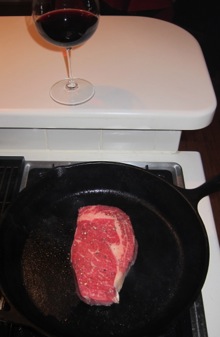 While I don’t usually smoke a cigar while eating a steak, a well-cooked steak and a glass of wine are pretty much always the prelude to a cigar. Something about the savory nature of a steak and a glass of wine (a good Rhone, Bordeaux, or California cabernet) just begs for a good cigar.
While I don’t usually smoke a cigar while eating a steak, a well-cooked steak and a glass of wine are pretty much always the prelude to a cigar. Something about the savory nature of a steak and a glass of wine (a good Rhone, Bordeaux, or California cabernet) just begs for a good cigar.
To that end, I’ve been cooking steaks for a while now and I have a few tricks that make my steaks extra tasty (and worthy of an after-dinner cigar). What follows are my personal tips.
Most important is picking the right steak. While filet mignon is a great cut of meat (especially at a steakhouse), when I’m cooking I prefer a ribeye or strip steak, both of which have more fat (and thus more flavor). Steaks are graded on their marbling, and while Prime are the best cuts (and the most expensive), Choice cuts offer excellent quality for the price (the next level down is Select). A good Choice cut at least one inch thick is perfect.
Next, season your steak with salt and pepper. Let it get to room temperature before you cook it (this is important), then liberally apply course salt and pepper just before cooking.
Forgo the grill and instead use a combination of a cast iron skillet on the stovetop and the oven. Pre-heat the oven to 450 degrees and simultaneously heat up a cast iron skillet, the hotter the better. Brown each side of the steak for a few minutes (until it begins to blacken) in the dry, hot skillet (without butter or oil). Then finish it in the oven until it firms up (only a few minutes is needed if you like your steaks medium-rare like I do).
Pull it out of the oven quickly then let it sit for five minutes. It will continue to cook while you wait. The result is an excellent, tender, flavorful steak that’s blackened on the edges while still rare and juicy in the middle.
Accompanied with a nice glass of fine wine, there is no better prelude to a good cigar. Cooked right, it’s as good as any steak you’ll have at an expensive steakhouse and it’s the perfect introduction to a fine medium- or full-bodied cigar with a scotch or bourbon.
photo credit: Stogie Guys

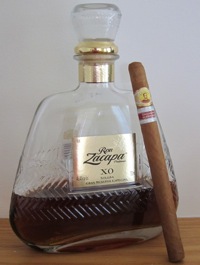 Even older and more limited than the Zacapa 23 is the XO. The XO is blended from
Even older and more limited than the Zacapa 23 is the XO. The XO is blended from 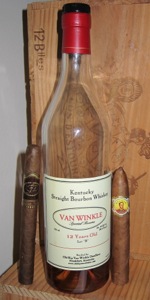 Pappy Van Winkle’s Family Reserve bourbon (some of the oldest bourbon around at 15, 20, and 23 years) is
Pappy Van Winkle’s Family Reserve bourbon (some of the oldest bourbon around at 15, 20, and 23 years) is 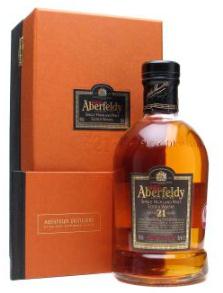 Oh dearest, dearest pocket. I sincerely hope you can forgive me once more for digging too deep, collecting the very last you had to offer, for no reason other than my own decadence. Forgive, and recover. I’m sure most, or at least many, fellow whisky lovers of less than unlimited means will have been in a similar situation at least once: You know you shouldn’t buy something, but equally you know that there is absolutely no chance of you not buying it.
Oh dearest, dearest pocket. I sincerely hope you can forgive me once more for digging too deep, collecting the very last you had to offer, for no reason other than my own decadence. Forgive, and recover. I’m sure most, or at least many, fellow whisky lovers of less than unlimited means will have been in a similar situation at least once: You know you shouldn’t buy something, but equally you know that there is absolutely no chance of you not buying it.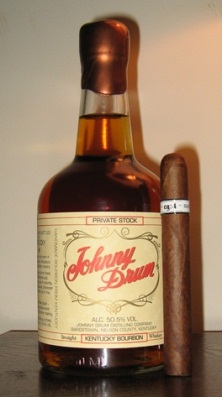
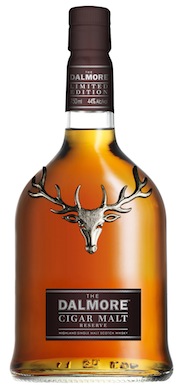 You might remember the discontinued Dalmore Cigar Malt (an excellent value at around $50), but this new Dalmore Cigar Malt Reserve is a different whisky. The old Cigar Malt, 40% ABV and made with 60% sherry casks and 40% bourbon casks, was discontinued, allegedly in part because some consumers either thought the scotch only went with cigars or was somehow made with tobacco. (The original Cigar Malt has, depending on who you ask, been rebranded as, or slightly changed to become, Dalmore’s Gran Reserva.)
You might remember the discontinued Dalmore Cigar Malt (an excellent value at around $50), but this new Dalmore Cigar Malt Reserve is a different whisky. The old Cigar Malt, 40% ABV and made with 60% sherry casks and 40% bourbon casks, was discontinued, allegedly in part because some consumers either thought the scotch only went with cigars or was somehow made with tobacco. (The original Cigar Malt has, depending on who you ask, been rebranded as, or slightly changed to become, Dalmore’s Gran Reserva.)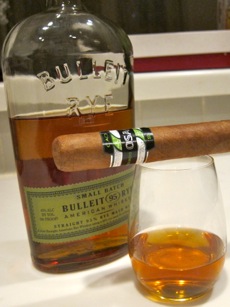 Bulleit is most notable for it’s high rye content. In order to be a rye, a whiskey must use at least 51% rye mash, supplemented by corn, barley, and wheat. Bulleit surpasses that minimum by leaps and bounds with 95% (the highest of any production rye), with just 5% barley.
Bulleit is most notable for it’s high rye content. In order to be a rye, a whiskey must use at least 51% rye mash, supplemented by corn, barley, and wheat. Bulleit surpasses that minimum by leaps and bounds with 95% (the highest of any production rye), with just 5% barley. Patrick Ashby
Co-Founder & Editor in Chief
Patrick Ashby
Co-Founder & Editor in Chief Patrick Semmens
Co-Founder & Publisher
Patrick Semmens
Co-Founder & Publisher George Edmonson
Tampa Bureau Chief
George Edmonson
Tampa Bureau Chief